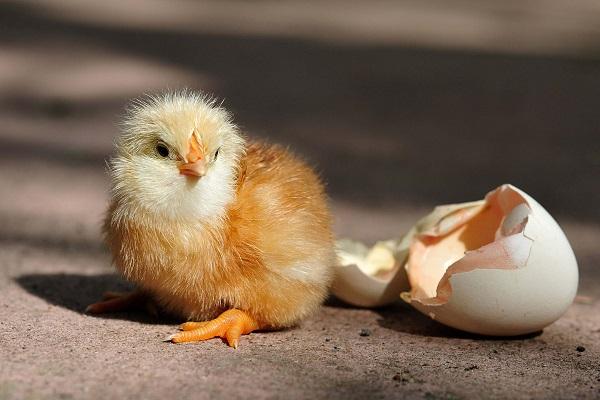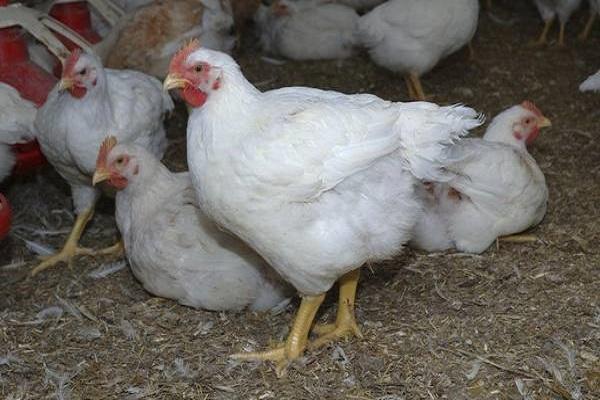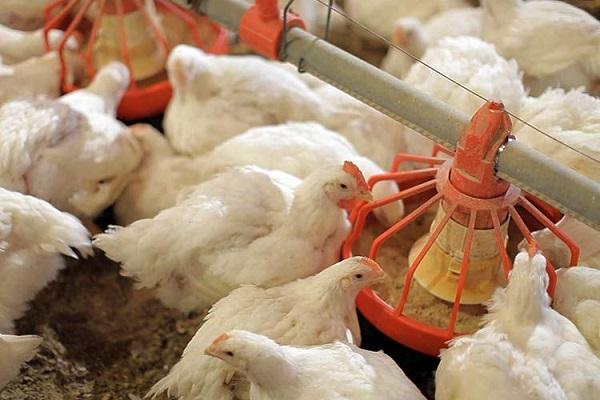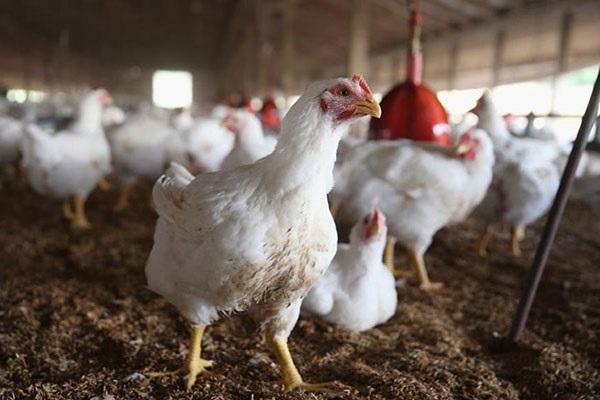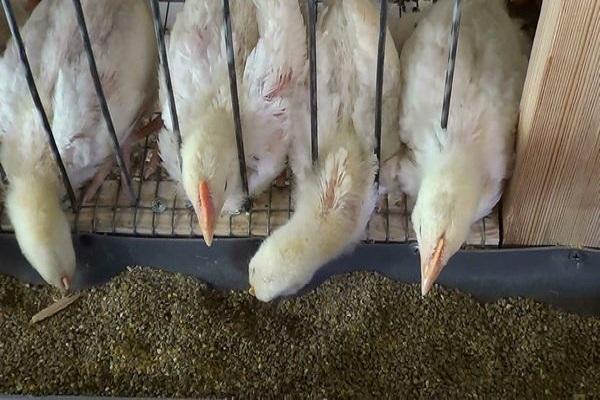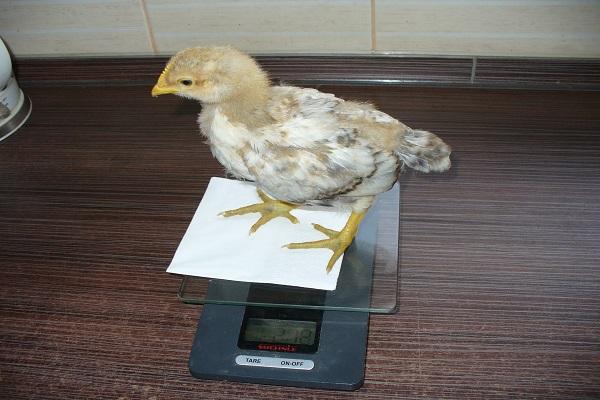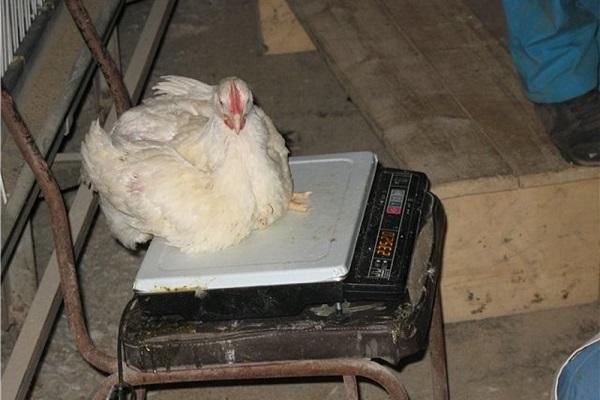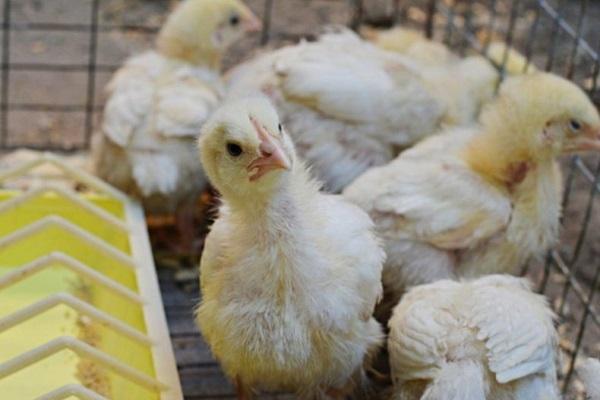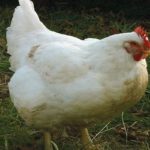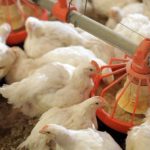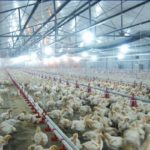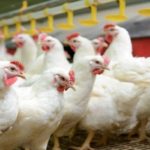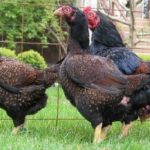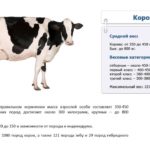The weight of broilers is monitored by day. This procedure helps eliminate problems if chicks are not gaining weight well. This breed is a meat breed; it is raised for industrial purposes and for sale. To get a good weight gain, it is necessary to create optimal conditions.
- Best breeds
- Weight gain by day
- Broiler growth
- 10 days
- 1 month
- 2 months
- Phases of bird maturation
- Growing conditions
- Broiler weight by week: table
- What is the weight of chicks at birth?
- How to determine the weight of a chick
- Causes of poor weight gain
- What to do with poultry if broilers do not gain weight
- Broiler slaughter weight
Best breeds
Broiler is a meat breed of chicken. They are raised for the purpose of processing into meat. Therefore, the intensity of weight gain plays an important role. The most popular types of birds include:
- Cobb - 500 - chickens by the 6th week of life have a mass of 2 - 2.5 kg, have a wide chest, a powerful large body. The meat acquires a natural yellowish tint after cutting.
- Ross - 308 - the average weight of an adult bird is 2.5 kg, maximum 6 kg, they have good egg production. The breast is large, the meat is light and tender.
- Ross - 708 - chicks quickly gain weight, by the end of the first month the average weight is 3 kg, and also have good egg production. The meat of an adult has a yellowish tint.
- Cross Hubbard - the breed has a high survival rate. Chicks have strong immunity. The average body weight at a young age is 2.5 - 3 kg, maximum 8 kg.
After birth, the chick reaches its maximum weight after 3 months. To do this, you need to regulate the chicken’s nutrition, monitor weight gain, and carry out daily weighings.
Important! There is no point in raising broiler chickens for longer than 70 days. By this time, slow growth is observed, the use of feed becomes irrational.
Weight gain by day
Weight gain in chicks is monitored daily. There are standards for this indicator. Deviations from it indicate improper care and feeding.
Body weight gain of chickens by day
| Age, days | Weight, g |
| 0 | 42 |
| 1 | 52 |
| 2 | 66 |
| 3 | 82 |
| 4 | 100 |
| 5 | 120 |
| 6 | 142 |
| 7 | 166 |
| 8 | 193 |
| 9 | 223 |
| 10 | 256 |
| 11 | 293 |
| 12 | 334 |
| 13 | 379 |
| 14 | 427 |
| 15 | 478 |
| 16 | 532 |
| 17 | 589 |
| 18 | 649 |
| 19 | 712 |
| 20 | 778 |
| 21 | 846 |
| 22 | 916 |
| 23 | 988 |
| 24 | 1062 |
| 25 | 1137 |
| 26 | 1213 |
In the first week of life, the weight gain in chicks is 10-20 g. Starting from the second week, weight gain increases from 30 to 50 g per day. Over the next 7 days, the chicks add 50 - 60 g. Over the last few days, the chick gains from 60 to 100 g per day.
Broiler growth
The bird is growing every day. They gain weight from 20 to 100 g per day.This is their peculiarity.
10 days
By the 10th day after birth, young individuals weigh about 200 - 250 g. It is worth considering that females are always slightly smaller than males, although they feed on the same basis as them. To ensure less active movements and promote weight gain, feeders are installed next to the chickens. They also limit their movement around the pen or chicken coop.
1 month
At 30 days of age, the chicks weigh from 1500 - 1600 g. Such an individual can be sent for slaughter. But with proper further care, body weight increases to 2 - 3 kg.
2 months
On day 60, the weight gain cycle comes to an end. At this point, the chickens weigh 2–3 kg. After reaching this weight, further keeping of broilers is pointless. They continue to eat the same amount of food, but gain weight very slowly. Over time, body fat increases rather than muscle mass. The quality of meat also decreases.
Phases of bird maturation
The development of broilers is divided into 4 phases. They allow you to calculate the amount of feed for each period. Highlight:
- Prestart. Age from birth to 5 days. Each individual consumes 15–20 g of food.
- Start. Duration of the period from 6 to 18 days of development. For one chick they spend 25-90 g of feed.
- Fattening Duration from 19 days to 1 - 2 months of age. Feed consumption is 90 - 160 g for each chick.
- Finish. Appears at 3 months of age. At this time, weight gain stops. One broiler eats about 160 - 170 g.
Growing conditions
The chicks are transferred to the chicken coop from the age of two weeks. Before moving in, the place of stay is disinfected, cleaned, and drinking bowls and feeding troughs are installed. The chicken coop is treated with lime or formaldehyde.
Important! After disinfection, young chickens are not allowed there for several days..
Then you need to provide heating. The room temperature should be kept at least 26°C. For this purpose, purchase an oil heater or infrared lamps with a green or blue filter. Stove heating is also suitable. A wall thermometer is placed in the room to monitor the living conditions of the chicks.
High humidity in the chicken coop contributes to the development of infectious diseases and decreased immunity. Therefore, the room is ventilated daily. In the warm season, chickens are taken out into the fresh air.
For feeding, special feed for broilers is purchased. They contain all the necessary nutrients and vitamins.
To prevent diseases, vitamin complexes and antibiotics are mixed into the feed. Use additives according to instructions.
Broiler weight by week: table
The weight of young hens is also monitored week by week. Their weight gain must comply with certain generally established standards. If there are minor deviations from the indicators, approximately 20 - 30 g, then this is considered normal.
Broiler weight by week
| Age, week | Chicken, g | Rooster, g |
| 1 | 98 | 102 |
| 2 | 190 | 210 |
| 3 | 350 | 410 |
| 4 | 580 | 660 |
| 5 | 840 | 940 |
| 6 | 1080 | 1260 |
| 7 | 1310 | 1590 |
| 8 | 1590 | 1880 |
These are average values. If the bird gains 100 - 200 g less than the specified norm, then measures must be taken. Most likely the diet does not meet the needs of the breed.
What is the weight of chicks at birth?
Chicks of broiler breeds are born with the highest body weight among all varieties of chickens. One chicken weighs on average 40 g. Larger individuals weigh 42 - 44 g. Outwardly, they are easy to distinguish from other breeds. They have powerful large paws and large sizes.
How to determine the weight of a chick
Chick weight is checked once a week or every day. Weighing yourself daily helps you better track your weight gain and identify the cause of your weight loss. A specific time is set for the procedure and carried out before the first feeding. In order not to get confused in the chickens, multi-colored tags or with notes are hung on their legs.
Electronic or mechanical scales are used to determine body weight. Each chicken is placed in a container. The container is weighed before the manipulation begins. Then they put it on the scales along with the chick. The weight of the container is subtracted from the result obtained and a note is made about the weight gain.
Causes of poor weight gain
In some cases, the weight gain of chickens does not meet the specified standards. There are reasons for this:
- low calorie feed;
- inconsistency in the quality of chicken feed;
- low temperatures in the room where chickens are kept, part of the energy is spent on warming;
- lighting duration less than 11 hours;
- lack of vitamin supplements;
- large pen, chicken spends a lot of energy when walking;
- infection or helminthiasis;
- lack of a diet schedule, which disrupts metabolic processes in the body.
What to do with poultry if broilers do not gain weight
If weight gain occurs inappropriately, then the first step is to determine the cause of this reaction. Then several manipulations are carried out:
- replacing food with something fresher and more balanced;
- reducing the area for chickens to walk;
- add vitamin supplements to food;
- increase lighting using electric lamps;
- Ultraviolet lamps are installed in the chicken coop for disinfection;
- set the feeding schedule by the hour, every 2 hours.
Broiler slaughter weight
Birds are usually slaughtered 50 days after hatching.Sometimes these deadlines are shifted. There is no point in raising a chicken for more than 70 days, since from that time on it stops gaining weight.
Important! It is better to slaughter broilers when they are well covered with feathers, so it is easier to pluck them.
By the time of processing, chickens reach 2.7 - 3 kg. Especially meat breeds increase weight up to 5 kg. 20% of the meat comes from the breast, 10% from the thighs, 6% from the drumsticks. The rest is skin, bones, wings and entrails.

